Katzen Arts Center
April 1, 9 am-4 pm
April 2, 2-3 pm
April 16, 2-3 pm
April 22, 11 am-4 pm
April 2023
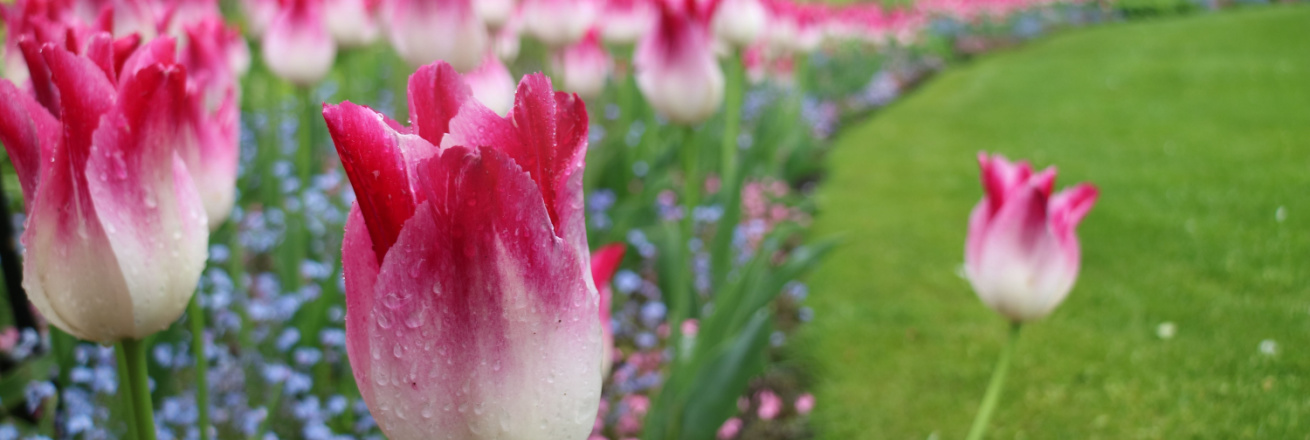

Following months of collaborative community discussions in a variety of forums – including the AU Neighborhood Partnership (AUNP), the Community Liaison Committee (CLC), direct engagement with University Avenue neighbors, and updates to ANC 3E, 3D, and 3A – American University is pleased to provide this neighborhood progress update on the Alan and Amy Meltzer Center for Athletic Performance (“Meltzer Center”) and the new Sports Center Annex (“SCAN”).
The Meltzer Center and SCAN projects—included in the 2021 Campus Plan that was supported by the AU Neighborhood Partnership and unanimously approved by the DC Zoning Commission—are critical components of AU’s Student Thriving Complex which is aimed at providing necessary space that strategically co-locates resources to support the well-being of all AU students. Neighbors’ input has directly shaped many important aspects of the planning effort, ranging from operational considerations for the facilities, including identifying opportunities for shared community use, to strategies aimed at mitigating potential light and noise impacts of the new buildings, to ensuring that the University Avenue vegetative buffer is appropriately maintained and enhanced.
In light of the productive and positive progress made by university and community stakeholders, AU plans to submit a Further Processing Application for the Meltzer Center and SCAN projects to the DC Zoning Commission in April 2023. As discussions and updates with members of the community continue over the coming months, the application will be reviewed by neighborhood ANCs and District agencies and will be scheduled for a public hearing later in 2023.
Please visit the Meltzer/SCAN Campus Plan webpage for more information about AU’s comprehensive planning effort, including detailed meeting presentation materials, FAQs, and the community input portal which includes responses to questions that have been raised throughout the process by neighborhood residents. If you have any additional questions or require further information, please contact us through the community input portal or call Maria Barry, Director of Community Relations, at 202-885-2146.
Thank you for your interest and participation in these important University planning efforts. We look forward to moving ahead together to meet the needs of the AU community while respecting and enhancing the quality of life of those who live within the neighborhoods surrounding campus.
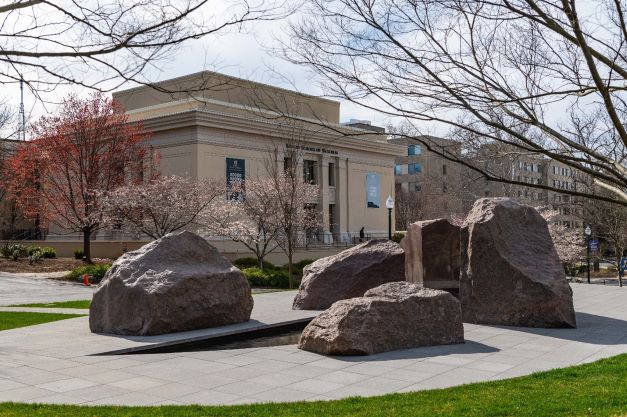
Since September, it has been impossible to miss the construction in the ellipse behind American University’s Kay Spiritual Life Center. This month, the gates were removed to reveal the transformation—five enormous granite boulders and smaller accent rocks weighing more than 450,000 pounds total, which surround a crescent-shaped pool of running water. These elements comprise Sudama, a monumental sculptural installation by American artist Elyn Zimmerman. The National Geographic Society gifted Sudama to AU and is funding all aspects of the complex installation.
“Art has the power to connect, and with the acquisition of Sudama, AU is enhancing its role as a convening arts institution in DC. Art is at the very heart of AU's engagement with the local community. Zimmerman's tranquil installation will provide students, faculty, staff, visitors, and the broader DC community with a truly peaceful and contemplative space that is open to all," says Linda Aldoory, dean of the College of Arts and Sciences.
Sudama creates an on-campus oasis among the trees and grass. “A reflective space—literally and figuratively,” says Jack Rasmussen, director and curator of the American University Museum at the Katzen Arts Center. “You see yourself, your surroundings, see the water, the smooth, polished stone, in that very special space.”
Sudama’s reveal on AU’s campus completes a journey that began in downtown Washington, DC. The work, then titled Marabar, was originally commissioned for the plaza outside the National Geographic Society’s downtown headquarters in 1981. It was Zimmerman’s first major sculptural commission. Rasmussen noted the work’s prominent place in the history of landscape sculpture. “This was a major, ambitious installation. Women artists just did not get commissions like this at that time.”
After earning her MFA from the University of California, Los Angeles in 1974, Zimmerman shifted from a focus on painting and photography to the large-scale installations she is best known for. When Marabar was commissioned, Zimmerman was given the freedom to be creative with the design. “The one caveat from the client was that the plaza design was to feature rocks and water,” she says. She found inspiration in the temples and caves of India following travel there in the 1970s, and in reading E. M. Forster’s novel A Passage to India (1924), where Forster describes the fictional Marabar Caves based on the real, ancient Barabar Caves in the Bihar state in northeast India.
“The Marabar Caves, with their rough natural exteriors and highly polished interiors, became my solution to the project—not as caves but as massive rough granite rocks with one, sometimes two, mirror-polished sides—to look as if a gigantic geode had been cracked open to straddle the 60-foot-long pool of water,” Zimmerman says. From its completion in 1984, the work remained an iconic fixture in front of the National Geographic Society’s headquarters.
In 2019, the National Geographic Society announced major renovation plans for its headquarters, including for the plaza that originally housed Marabar. Zimmerman worked with National Geographic Society to find the sculpture a new home. Zimmerman and representatives from the Society visited several potential sites, including other universities, and ultimately chose the ellipse at American University. With a new design planned, the boulders were loaded onto flatbed trucks, driven four miles to AU’s campus, and put into place with cranes. Zimmerman says, “I felt the work needed a new identity given its new location, and I titled it Sudama after one of the real-life Barabar caves described in Forster’s novel.”
As the AU community experiences the sculpture up close for the first time, the potential to unite departments on campus through academic programming is already underway. The AU Museum is partnering with the Department of Performing Arts on a potential site-specific public performing arts project this fall. The proposed 30-minute performance will activate the sculpture space through a technological interplay between Nancy Jo Snider, Hurst Senior Professorial Lecturer, on cello, Associate Professor and computer musician William Brent, visiting artist and dancer Miřenka Čechová, and Ross Karre (Oberlin Conservatory Associate Professor of Percussion).
Sudama was gifted to AU during the Change Can't Wait campaign which creates transformative educational opportunities, advances research with impact, and builds stronger communities.
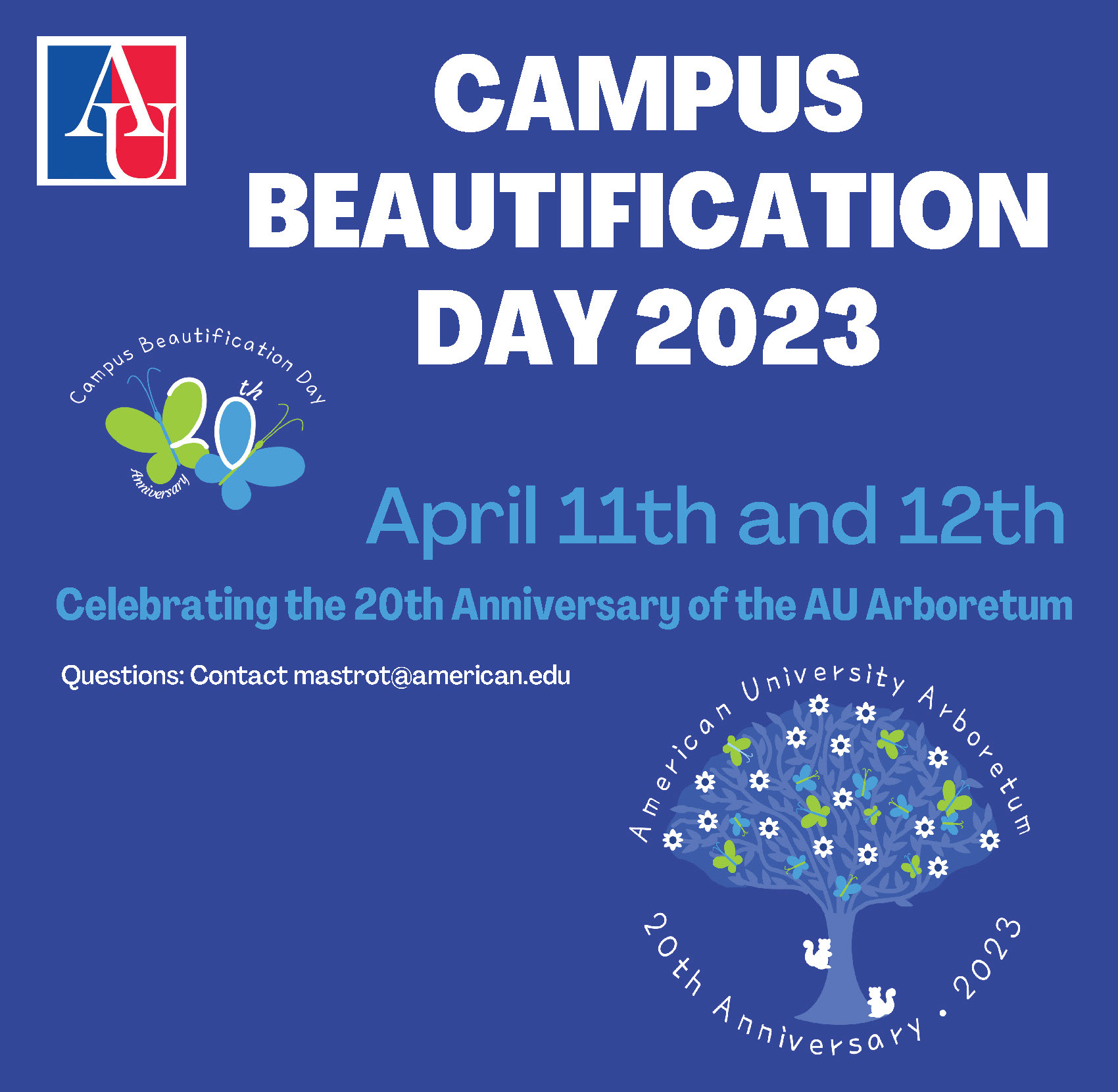
Please join the American University community for the 30th annual Campus Beautification Day (CBD). Events take place on Tuesday, April 11 and Wednesday, April 12 from 9:00 am to 12:00 pm. This two-day community-building event continues the tradition of bringing students, faculty, staff, alumni, neighbors and friends together to work on a common goal of improving campus. The theme for this year’s event is centered around AU’s celebration of the 20th anniversary of campus being designated as an accredited Arboretum and Gardens.
The annual event draws 300 or more volunteer participants who work on various beautification and sustainability-related projects throughout the campus. Participants can register on the day of the event on the quad in front of the Mary Graydon Center. You will be given a commemorative 20 Year Arboretum T-shirt, pair of work gloves, and be assigned to a work site.
At noon, on April 12 participants will gather in the amphitheater for lunch and a presentation followed by raffle prizes. The presentation includes remarks from President Burwell, and guest speakers will include a presentation of the Tree Campus USA program recertification (13 consecutive years for AU), as well as the presentation of the annual Green Teacher Award.
Interested neighbors do not need to register in advance. Please arrive on campus, on the main quad, in front of Mary Graydon Center at 9:00 a.m. on April 11th and/or 12th. Feel free to attend one or both events.
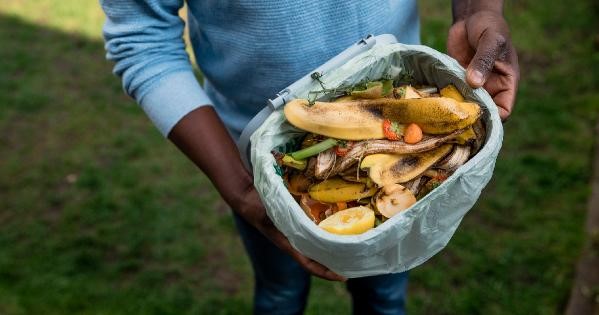
You can compost at your home regardless of your space.
Each year, 133 billion pounds of food is wasted in this country, according to the US Department of Agriculture—enough to feed every American a meal a day for more than a year.
But according to Megan Litke, AU’s Director of Sustainability, who’s spearheading AU’s efforts to achieve zero waste by 2030, even small, individual actions can help take a bite out of a mounting environmental crisis.
“Each year, it’s getting easier for the average household to compost,” she said. “You have two paths: food waste can become a potent greenhouse gas, or it can reduce emissions and create nutrient-rich material.”
Food scraps that are tossed in the trash instead of a compost bin—on campus or at home—head to a landfill, which emits methane gas while the organic material decomposes. According to Reuters, landfills, often located in disadvantaged communities, are responsible for 11 percent of global methane emissions.
But composting can keep some of that food waste out of landfills, while improving soil health, attracting beneficial organisms, and reducing the need for pesticides. Here, Litke, herself a backyard composter, explains how to turn food scraps into a nutrient-rich feast for your plants.
AU’s compost goes to a facility in Prince George’s County, Maryland, that can process meat, bones, and oil because of the heat it generates to break down those scraps. Composting at home is limited to uncooked vegetable and fruit scraps, eggshells, and coffee grounds.
You can use a bin—a repurposed container or one purchased especially for composting—to store your scraps. Many people store food waste in the freezer because it’s easier to deal with and won’t rot. That’s a great option if you have fridge space.
If you live in an apartment or condo, check to see if your building has a compost bin. If not, you can pay a company like Compost Cab or Compost Crew to pick up your waste. Or you can drop it off at one of the 10 sites, mostly farmers markets, that Zero Waste DC partners with. DC Parks and Recreation also facilitates a community compost co-op with more than 50 critter- and odor-proof containers near community gardens. Most cities and counties in Northern Virginia and Maryland have similar options.
You may not want to tote your compost to a site. You’ve designated a spot on your balcony for a tomato plant, or you want to do some container gardening.
If that’s the case, mix the banana peels, apple cores, and eggshells in your compost bin with green and brown materials like leaves, paper bags, egg cartons, and even scraps of paper. Turn or stir your compost occasionally—anywhere from once a week to once a month—to aid in the breakdown. If it starts to smell, toss in some more brown material; if it’s dry, add some water. After a few months, when the chunks of organic matter disappear, the color grows darker, and the compost starts to smell like earth, it’s ready to use.
If you don’t want to get your hands dirty, you can buy worms online for a process called vermicomposting. The worms feed on the compost and eventually create nutrient-rich waste for your planter. You can buy or make your own bin to keep inside or outdoors, but you must be cognizant of the temperature—if it’s too hot or too cold, the worms will likely die. If you keep the bin healthy by ensuring it has oxygen and avoiding excess moisture, it shouldn’t smell.

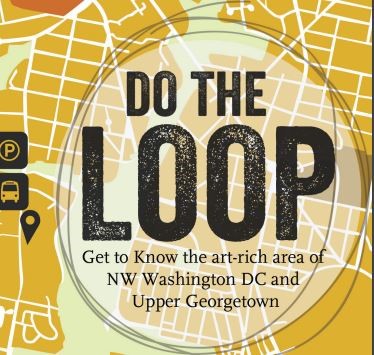
Discover the art loop of Northwest Washington, DC! The Kreeger Museum, American University Museum at the Katzen Arts Center, Dumbarton Oaks, Jackson Art Center, and the galleries of Georgetown’s Book Hill all have collaborated with Do The Loop, a free day of indoor and outdoor art programming, complete with shuttle service provided between locations. Do the loop on April 22, 2023, from 11am-4pm.
Find out more here: https://dotheloopdc.org/
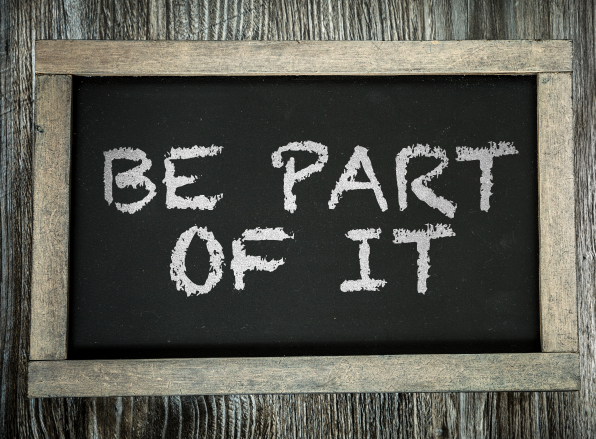
Please consider joining the AU Neighborhood Partnership which works to provide a consensus-based forum to resolve issues affecting the communities near American University. Interested members of the community may join one of the Partnership’s five standing working groups, comprising community stakeholders and AU leadership.
If you would like to become a member of a working group, please email communityrelations@american.edu. As always, visit www.american.edu/communityrelations for more information.
The Department of Performing Arts presents a lively roundup of vocal and instrumental music programs to welcome spring. Featuring our symphonic band, chamber singers, chorus, symphony orchestra, and an outdoor performance from the AU Jazz Ensemble. Tickets are $10 (faculty, staff, children, seniors, AU alumni), $15 for the general public, and free for AU students.
Learn more: https://www.american.edu/arts/spring-music-performances-at-au.cfm
For the latest on American University Lacrosse, stay tuned to AUeagles.com and follow the team on Twitter (@AU_Lacrosse), Instagram (@au_wlax), FULL SCHEDULE
Tickets are easily shareable to family and friends with just a few clicks from your mobile device!
Check https://aueagles.com/tickets for complete sporting events schedule and ticket information!
